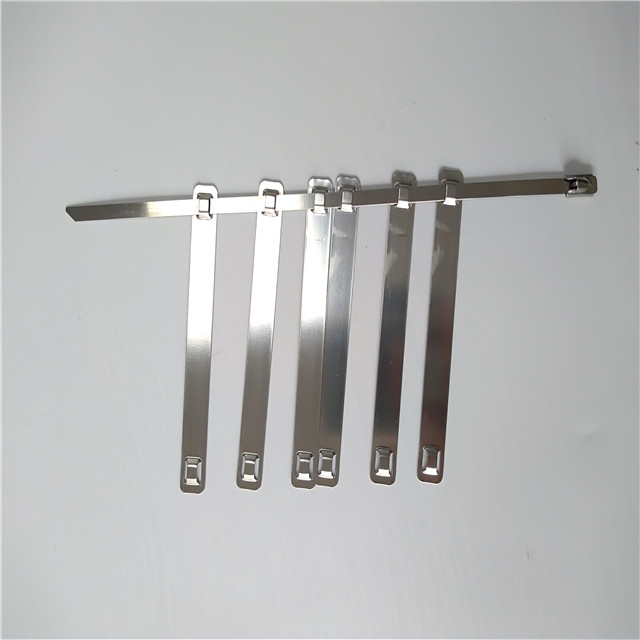- Time:2019/7/3 posted:Kehong Enterprises Co.,Ltd.
About the rust spot of stainless steel tie and how to prevent it:
The rust point of the stainless steel tie, we often say that the pitting is also known as pit erosion or small hole corrosion, the stainless steel tie erosion is occurred in a specific corrosion medium. With certain special effects, generally occur son-in-use of halogen anion, anion solution, which is the most corrosive chloride, bromine erosion, with corrosion, is one of the common local corrosion of stainless steel.
1, we first understand the stainless steel tie of the cause of pitting, when the medium contains some active anions (such as Cl-), damage stainless steel surface passivation film occurs. Because of the base at the site of the bluntfilm damage, the metal is exposed to make it activate, while the passivation membrane is blunt, thus forming an active blunt corrosion cell. Because the anode area is much smaller than the cathode area, the anode current density is large, so the anode metal quickly corrodeinto into small holes, it becomes the reason for the formation of stainless steel tie erosion.
2, let's look at what factors affect the pitting of stainless steel tie? The impact of the media. In addition to halogen anions, oxidizing metal ions (e.g. Fe, Cu, Hg), can also promote pitting, and O in the solution, and other oxidants are the necessary conditions for pitting, the effects of alloy ingestions. Adding radon in stainless steel can improve the stability of the membrane, so that the stainless steel surface produces a very dense and solid passivation, the membrane, chromium is mainly to improve the steel passivation membrane repair capacity or regenerative capacity.
3, then how do we prevent stainless steel tie erosion?
1) Select Auschwitz stainless steel with appropriate molybdenum elements and higher chromium;
2) Control the concentration of halogen ions in the solution, especially C1 ions, and avoid local concentration of the solution;
3) Add a corrosion inhibitor to improve the PH value of the solution;
4) There are other ways to prevent stainless steel tie erosion, that requires our practitioners to explore, observe, good at summing up.

不锈钢扎带的锈点问题解决
不锈钢扎带的锈点,我们常说的点蚀又称坑蚀或者是小孔腐蚀,不锈钢扎带的点蚀是在特定的腐蚀介质中发生的。具有一定的的特效性,一般发生在含有卤素阴离子,阴离子的溶液中,其中以氯化物、溴化物侵蚀性最强,具有腐蚀的后面,是不锈钢常见的局部腐蚀之一。
1、我们先了解一下不锈钢扎带的点蚀产生的原因,当介质中含有某些活性阴离子(如Cl-)时,破坏不锈钢表面钝化膜发生。由于钝化膜破坏处的基体,金属显露出来使其呈活化状态,而钝化膜处为钝态,这样就形成了活性一钝性腐蚀电池。由于阳极面积,比阴极面积小得多,阳极电流密度大,所以阳极金属很快腐蚀成小孔,就成为了不锈钢扎带的点蚀的形成的原因。
2、我们再看看影响不锈钢扎带的点蚀的因素有哪些?介质的影响。除卤化物阴离子以外,氧化性的金属离子(如Fe、Cu、Hg,)也能促使点蚀产生;溶液中的O,和其它氧化剂是产生点蚀的必要条件、合金元素的影响。在不锈钢中加入钼能提高膜的稳定性,使不锈钢表面生成很致密而牢固的钝化,膜、铬主要是提高钢的钝化膜的修复能力或称再生能力。
3、那么我们该如何防止不锈钢扎带的点蚀?
1)选择含有适当的钼元素和较高铬的奥氏体不锈钢;
2)控制溶液中卤素离子的浓度,特别是C1一离子,并避免溶液的局部浓缩;
3)加入缓蚀剂提高溶液的PH值;降低介质的温度,温度越高点蚀越显著。
4)还有其他方法可以防止不锈钢扎带的点蚀,那需要我们从业者不同的摸索,观察,善于总结。

